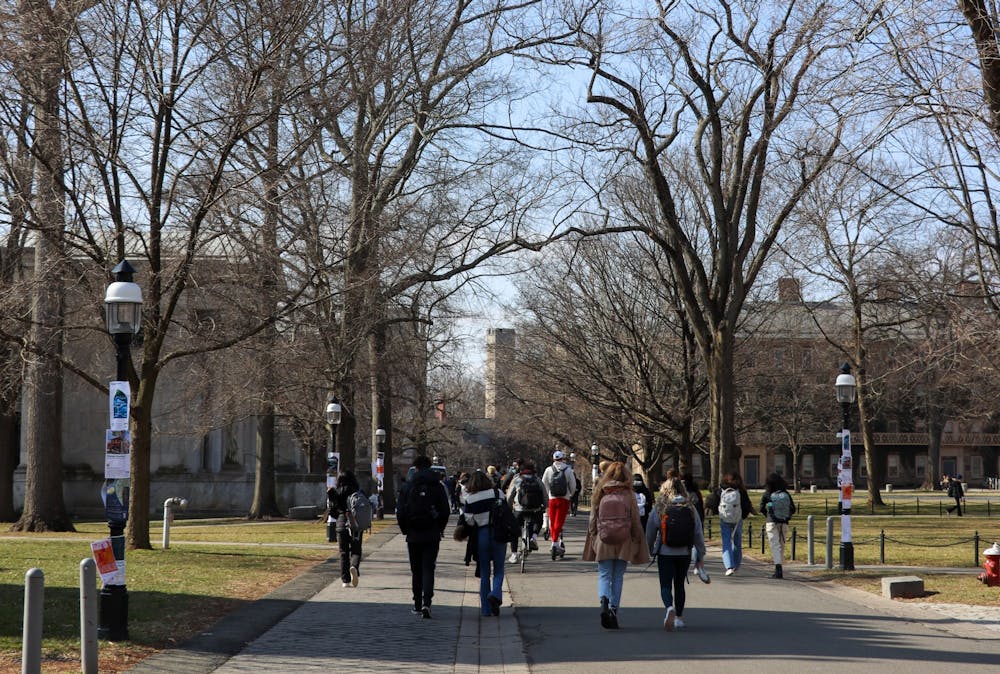As Princeton’s campus has rapidly transformed, defined by extensive construction and considerable expansion, cross-campus commutes have grown longer, and students have found themselves increasingly short on time. It has become increasingly clear that “passing time,” the existing 10-minute gap between classes, does not work for Princetonians. Imposing significant limitations on everything from course scheduling to in-class engagement, it comprehensively affects the student experience and leaves students increasingly unable to participate in the intellectual moments that define a collegiate experience.
On Sept. 29, the Undergraduate Student Government Academic Committee proposed changes to passing time that, if implemented, would take effect in 2025 and would seek to mitigate the effects of construction and campus sprawl. The University should increase passing time to twenty minutes to respond to increased construction, reduce existing barriers to interdisciplinary education, allow for increased engagement with instructors and peers, and improve in-class learning quality.
Increasing passing time would provide students with new opportunities to engage their professors and TAs. With additional time to move between classes, students can spend more time after class to ask questions, clarify points of uncertainty, and discourse with their instructors. Beyond enriching the quality of in-class learning by mitigating stress-related lack of focus (as when preparing for a sprint across campus at the end of class), it would provide students the opportunity to go above and beyond. Critically, this intimate exchange of ideas, inquiries, and answers, even in that short period, constitutes organic learning that enriches intellectual growth. Passing time, at first look, seems a mere logistical matter, but it possesses the potential to significantly affect those critical day-to-day moments of a Princeton education.
There are far too many things to do at Princeton, and while the University would want us to take advantage of more of them, there is simply not enough time for it all. The last place students should have to worry about this is while rushing desperately from class to class and appointment to appointment. Increasing the time between classes ensures that students will have sufficient time to engage with and enrich the University’s vibrant intellectual environment.
With construction at Princeton dramatically reducing pedestrian mobility and accessibility, expanding passing time is critical to ensuring students can navigate campus without being late to class. The University, currently pursuing its ambitious 2026 Capital Plan, is set to add some 3 million square feet of building space. On track to continue into 2027, with several projects underway concurrently, construction has transformed how students traverse campus. Princetonians have to navigate construction detours, many of which, used by trucks and other construction vehicles, are hardly pedestrian-friendly. While the University released a Campus Map app for alternative wayfinding, the issue of increased travel time remains, and students should not have class time impinged upon because of time-consuming detours.
Since construction is critical to meeting Princeton’s institutional priorities, the University should ensure that scheduling reflects the new reality of the student experience and accommodates the longer detours necessitated by construction. The grand scale of the 2026 Capital Plan, which sets Princeton on a course for the development or use of all of the University’s land from Nassau to south of Lake Carnegie, means students will not merely face an increased number of obstacles but a more sprawling campus to navigate. If 10 minutes is inadequate as it stands, expansion further consigns existing policy to inadequacy.
The need for laboratories and science buildings has increasingly pushed the University’s geographical center eastward across Washington Road. As it stands, the trip from the northern part of campus, East Pyne Hall, to Frick Chemistry Laboratory takes at least 13 minutes. Therefore, even absent construction, crossing campus in the existing 10-minute window is simply infeasible. With a greater number of buildings east of Washington already, constraints on mobility have increased. Insofar as the ES and SEAS building is set to be completed in 2025, it will draw a larger share of the student population further east and down the campus consequently passing on the costs of lengthy commute times. Policy must, therefore, reflect the emerging reality of campus sprawl.
A larger campus presents a considerable — but resolvable — barrier to interdisciplinary education. With the University’s south and eastward expansion over the decades, students face lengthy commutes between classes, particularly BSE concentrators. The distance to the E-Quad is considerable. For students seeking to balance the humanities and sciences, such as AB pre-med students, commute times that potentially impose on class time constitute a considerable challenge.

Therefore, the time increase would eliminate yet another obstacle facing students hesitant about interdisciplinary study and encourage them to pursue a proper liberal arts education. The University has energetically sought to ensure that BSE students receive a proper liberal arts education by emphasizing the humanities. Doubling passing time would be essential to realizing that goal. Insofar as Princeton believes interdisciplinary education facilitates immense individual growth and thoughtful, effective problem-solving, it should not be impeded by a long walk.
The University’s strategic priorities are ever-present. Expansion, construction, encouraging the liberal arts, and fostering organic intellectual engagement sit prominently among them. Construction and the mobility challenges it poses will doubtless endure insofar as they are critical to realizing those goals. The University has indeed faced considerable growing pains, of which increased class-to-class travel times pose a particular — but easily resolvable — challenge. With greater focus on both the sciences and interdisciplinary education and fostering a campus environment well-suited to the modern University, lengthening passing time to 20 minutes enables the realization of the full potential of a Princeton education.
Aidan Gouley is a first-year from Fairfield, Conn. intending to major in Politics. He is a contributing columnist at the ‘Prince.’ He can be reached by email at aidan.gouley@princeton.edu.









